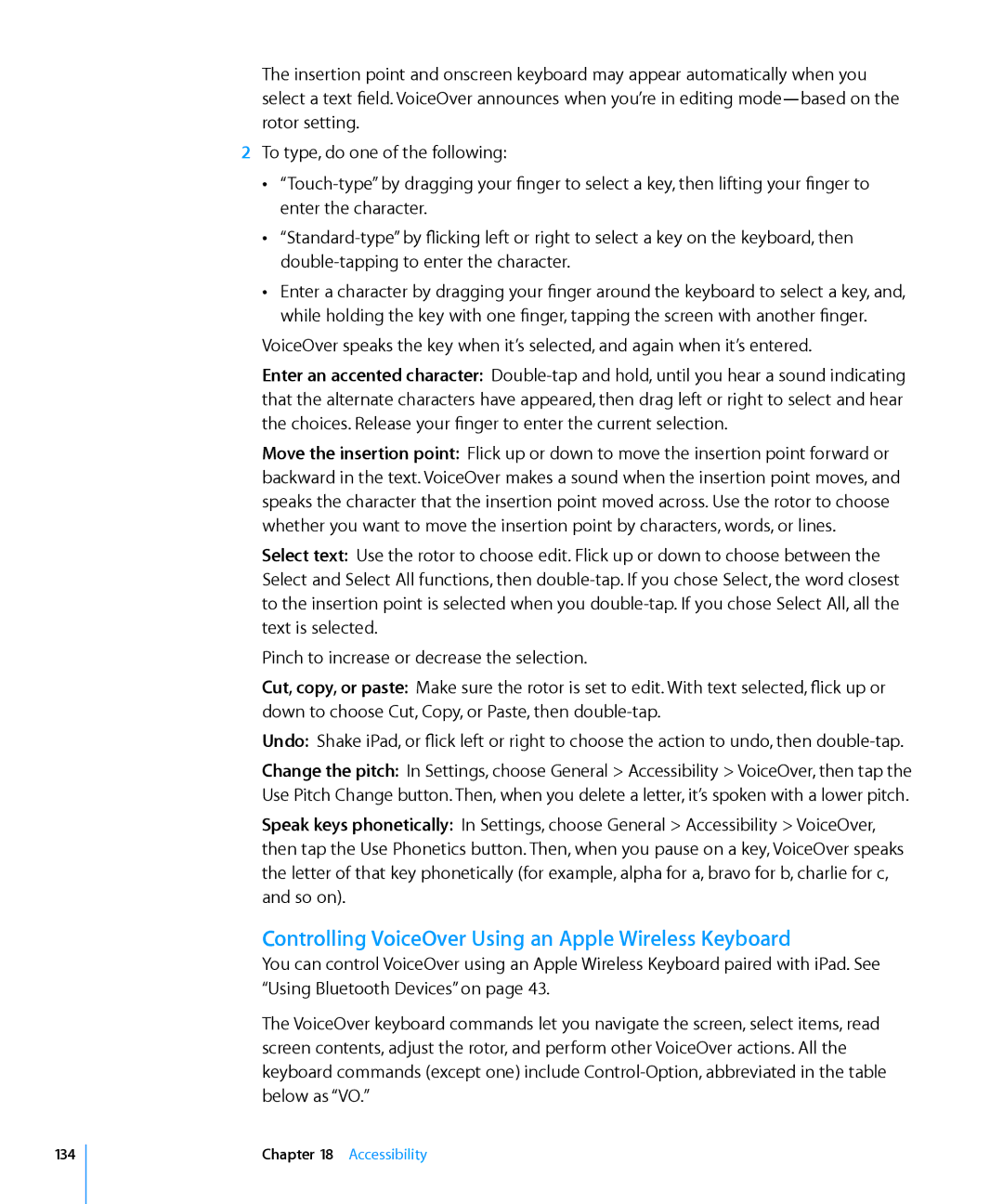The insertion point and onscreen keyboard may appear automatically when you select a text field. VoiceOver announces when you’re in editing
2To type, do one of the following:
ÂÂ
ÂÂ
ÂÂ Enter a character by dragging your finger around the keyboard to select a key, and, while holding the key with one finger, tapping the screen with another finger.
VoiceOver speaks the key when it’s selected, and again when it’s entered.
Enter an accented character:
Move the insertion point: Flick up or down to move the insertion point forward or backward in the text. VoiceOver makes a sound when the insertion point moves, and speaks the character that the insertion point moved across. Use the rotor to choose whether you want to move the insertion point by characters, words, or lines.
Select text: Use the rotor to choose edit. Flick up or down to choose between the Select and Select All functions, then
Pinch to increase or decrease the selection.
Cut, copy, or paste: Make sure the rotor is set to edit. With text selected, flick up or down to choose Cut, Copy, or Paste, then
Undo: Shake iPad, or flick left or right to choose the action to undo, then
Change the pitch: In Settings, choose General > Accessibility > VoiceOver, then tap the Use Pitch Change button. Then, when you delete a letter, it’s spoken with a lower pitch.
Speak keys phonetically: In Settings, choose General > Accessibility > VoiceOver, then tap the Use Phonetics button. Then, when you pause on a key, VoiceOver speaks the letter of that key phonetically (for example, alpha for a, bravo for b, charlie for c, and so on).
Controlling VoiceOver Using an Apple Wireless Keyboard
You can control VoiceOver using an Apple Wireless Keyboard paired with iPad. See “Using Bluetooth Devices” on page 43.
The VoiceOver keyboard commands let you navigate the screen, select items, read screen contents, adjust the rotor, and perform other VoiceOver actions. All the keyboard commands (except one) include
